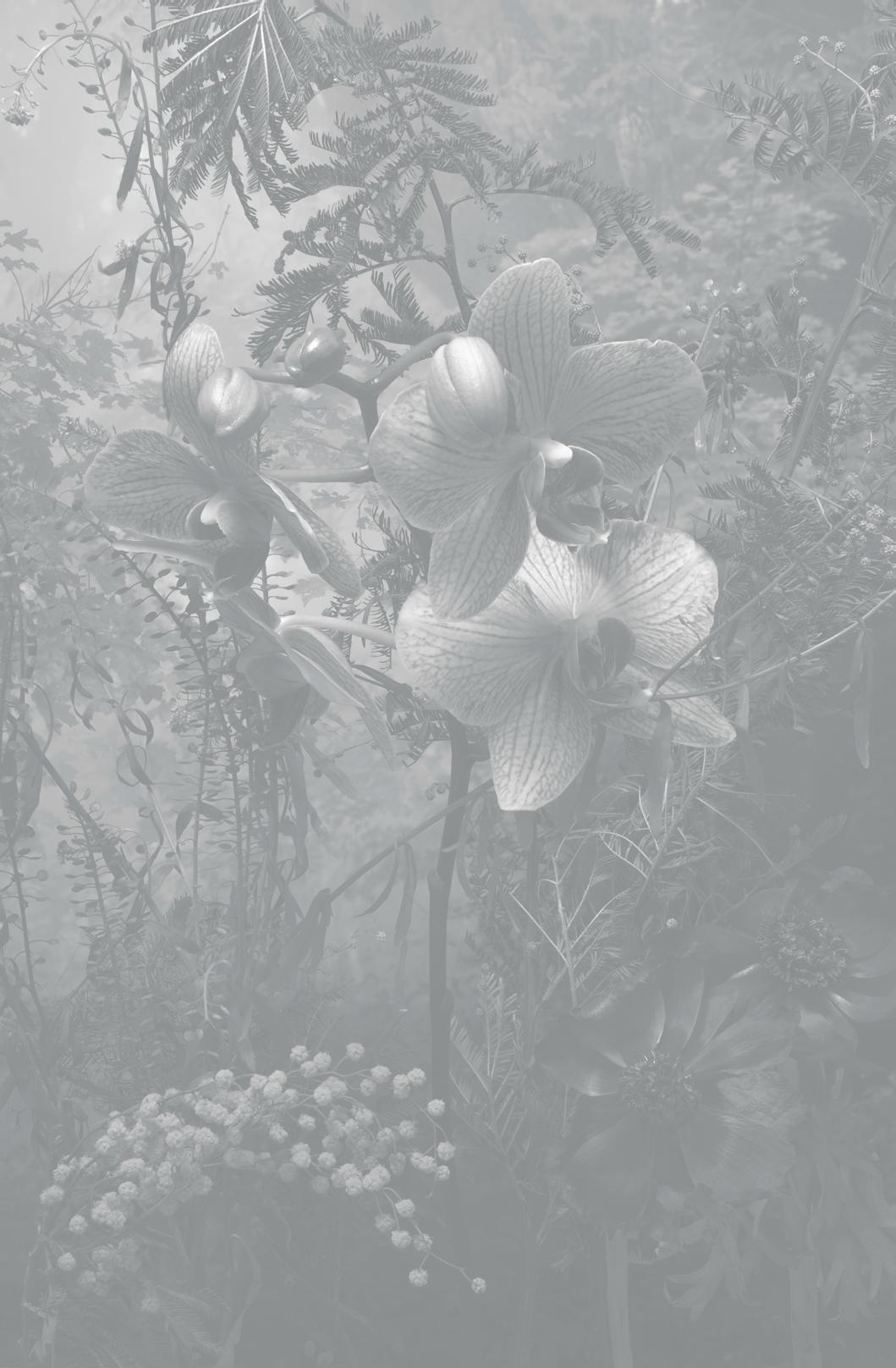

Maison Senato: The Photography Residency

Maison Senato: The Photography Residency




Aletheia Casey
Tine Poppe
Callie Chee
Robert Clark
Orsolya Haarberg
Martin Gregus
Cristina Mittermeier
Jim Naughten
Brooke Holm
Jon McCormack
Ami Vitale
Vincent Musi
Arnfinn Johansen
Frans Lanting
Jassen Todorov
Nichole Sobecki
Javier Aznar
Xavi Bou
Babak Tafreshi
Momatiuk Eastcott
Jody MacDonald
Jose Manuel Grandio
Xavi Bou
Tim Flach
Isabella Tabacchi
Aletheia Casey
Nick Brandt
Ami Vitale
Ami Vitale
Steve Winter
Evgenia Arbugaeva
Kristina Makeeva
Maison
Amira
Maison
Alessia
Vital
Maison Senato:

A Milanese Haven for Art, Luxury, and Visual Culture


In a city where history and innovation are constantly in conversation, Maison Senato stands as a place that feels both timeless and entirely of the present. Tucked away on Via Senato, this extraordinary residence is not just a space— it’s a way of experiencing Milan through a lens of beauty, craftsmanship, and art. Each of its six residences, designed by Locatelli & Partners, has its own distinct personality, shaped by carefully chosen materials, custom finishes, and curated works of photography and design. Every detail tells a story of Italian artisanship, where tradition is not merely preserved but reimagined. But Maison Senato is more than a place to stay—it is a home for photography. Under the curatorial vision of Alessia Glaviano, a leading voice in contemporary visual culture and the mind behind PhotoVogue, Maison Senato transforms into a living museum. Here, photography does not simply decorate the walls—it creates a dialogue, inviting guests to see the world through new perspectives. Beyond its artistic soul, Maison Senato is an oasis of privacy and refinement, offering a world apart from the city’s rhythm. Whether in the rooftop terrace with a panoramic pool, the private cinema, the winter garden, or the intimate living spaces, every corner invites a slower, more thoughtful way of living. It is a place where luxury is not about excess, but about intention—a carefully composed experience, as personal as it is unforgettable.



Maison Senato is more than a residence-it is a living gallery, where luxury meets art, and every stay becomes an immersive experience. Through curated photography exhibitions, we transform spaces into stories, offering our guests not just a place to stay, but a place to feel, reflect, and be inspired.

A Home for Photography, Culture, and Impact


At the heart of Milan, Maison Senato is a place where art, photography, and cultural dialogue converge. Conceived by Diomede under the Mediolanum Group, this visionary project redefines the relationship between luxury, creativity, and contemporary visual storytelling. Designed by Massimiliano Locatelli, its architectural spaces are more than a backdrop—they are an integral part of a living, evolving museum dedicated to photography.
With this inaugural publication, Maison Senato begins a new chapter, launching a book series that celebrates its identity as a hub for photographic excellence. Under the curatorial direction of Alessia Glaviano its exhibitions spark deep conversations on aesthetics and meaning, offering an immersive experience that extends beyond the gallery walls.
The images in this book showcase works exhibited across Maison Senato’s seven floors, offering a glimpse into the world of Vital Impacts. Yet this selection is just a fraction of the stories told through their lens. Through this publication, we invite readers to not only explore the photography within these pages but also to delve deeper into Vital Impacts’ extraordinary initiatives. This collaboration embodies Maison Senato’s mission: to be a cultural landmark where art is not only displayed but serves as a catalyst for awareness and change.



Photography has the power to profoundly influence our state of mind—an image can make us joyful or sad, fill us with nostalgia or a sense of wonder. As John Szarkowski suggested, images can act as mirrors, offering a glimpse into the inner world of the artist, or as windows, expanding our perception of the world beyond our own. I find this to be quite magical—taking us to places we have never been, making us smile or cry, evoking memories or dreams, shaping our emotions and perspectives in unexpected ways.
The union of ethics and aesthetics has guided my work for years; for me, it is not just a principle but a fundamental approach to curating meaningful visual narratives. It is with this vision that I conceived the curation of Maison Senato: a place designed to make every stay unforgettable, where the images on the walls are not mere decoration but an integral part of the experience. This exhibition, the first of many in these spaces, celebrates the breathtaking work of Vital Impacts, reminding us that beauty and responsibility can—and must—coexist in the art we choose to surround ourselves with.

Photography as a Force for Conservation


Vital Impacts is a non-profit organization founded on the belief that art and storytelling can drive meaningful change. Established by acclaimed photographer and filmmaker Ami Vitale alongside award-winning journalist and filmmaker Eileen Mignoni, it has grown into a global movement dedicated to raising awareness of urgent environmental challenges and supporting the communities working to protect our planet.
Through mentorship, funding, and advocacy, Vital Impacts amplifies the voices of environmental storytellers and invests in grassroots conservation efforts. In just three years, we have raised over $3 million for local conservation initiatives safeguarding biodiversity and have supported over 700 photographers from 79 countries with mentoring and direct grants to document critical environmental issues. Our live speaking series has engaged over 10,000 students in educational programs designed to inspire action.
The images in this book offer a glimpse into the exhibition at Maison Senato, highlighting the beauty and resilience of the natural world. Yet, they represent only a fraction of Vital Impacts’ vast and meaningful work. We invite readers to explore more of their initiatives by visiting their website, discovering how photography continues to be a powerful catalyst for awareness, engagement, and change.



In the past fifty years, we have lost 73 percent of the world’s wildlife. This stark reality highlights the urgent biodiversity crisis we face. The future of our planet is in our hands, and we cannot afford to feel overwhelmed or hope that someone else will address the problem. At Vital Impacts, we harness the power of art and storytelling to support community-based conservation efforts and elevate visual journalists who are dedicated to sharing impactful environmental narratives. We recognize the critical role these visual journalists play in spotlighting the efforts of communities to protect our environment and wildlife. By collaborating with some of the world’s most influential environmental photographers and mentoring the next generation of global environmental storytellers, we connect science and narratives to highlight the interconnectedness of individual well-being and environmental health. Photographs cut through apathy, capture reality, evoke empathy, and ignite action. Through this visual medium, we reconnect people with nature, highlighting not only the perils but also the promise—the hope that exists all around us.



Maison Senato: The Photography Residency
Aletheia Casey is an Australian photographic artist based in London. Her work is concerned with environmental issues and post-colonial legacy, alongside personal themes around family and the notion of home.
This work is a very personal reaction to the climate emergency, in particular to the Australian fires which almost destroyed my family home. Although we have not experienced the ferocity of the 2019/2020 bushfires this year, the threat is ever present. This work uses my own archival images, and, through painting, scratching, and reworking, reimagines the landscapes of my childhood home, now with the threat of environmental devastation. The interference of my brushstrokes on the prints became a mirror of human intervention in nature, my own hand attempting to control the uncontrollable.
Aletheia Casey
A Lost Place Home

Gilded Lilies is my quiet call to save the climate. It’s a series of portraits of cut flowers, similar to the nature morte genre, but rather than focusing on our own mortality, I hope to give a reminder of the environmental impact of the cut flowers industry and to convey a sense of our planets mortality through these flowers.
When giving these magnificent creatures close attention, they become a mysterious, dreamlike universe in themselves and a reminder of the incredible beauty of nature that we are at serious risk of losing.
Tine Poppe
Tine Poppe is an artist photographer living and working in Oslo, Norway. Her practice focuses on bringing attention to social, political, existential and environmental issues through art or documentary photography.
Phalaenopsis Aphrodite
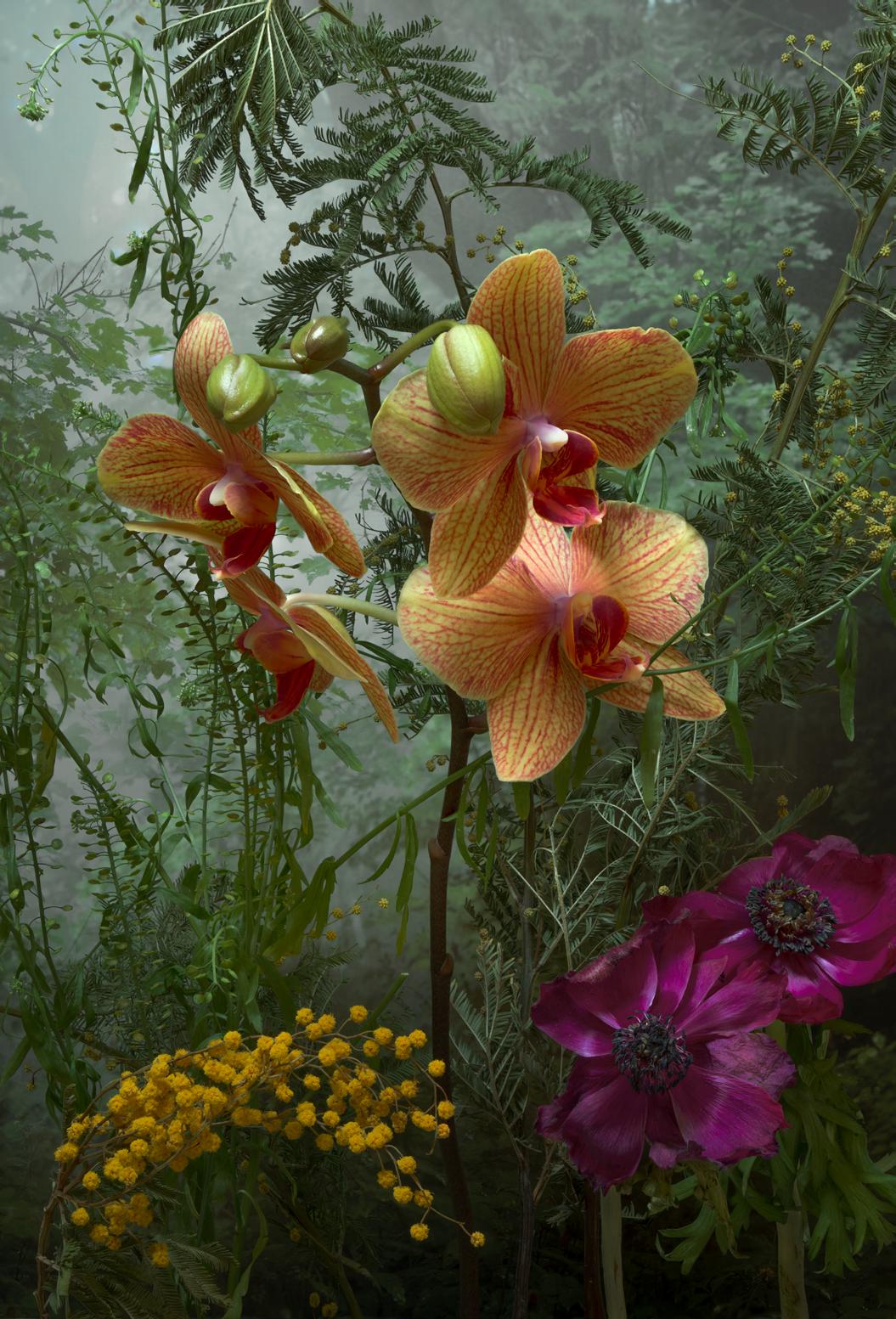
Callie Chee has been featured by Nat Geo, CNN, BBC and is known for capturing and exploring world’s unusual locations.
Known as Martian mountains, the first thing that one sees is the layers upon layers of colours, amidst a stark and barren terrain. The mountains vary from a child’s height to hundreds of meters in height. Under a night sky, they gleamed in white exuding an extra terrestrial vibe.
The history of these mountains dates back to 5 million years ago. Geologists have different accounts for the formation of these mountains. Some say they are a continuation of the Zagros mountain range, a range that ends in Pakistan, while others believe they had been buried under tons of soil in the past and have turned up with the passage of time.
Callie Chee
Iran Chabahar Mountain

Robert Clark is a freelance photographer based in New York City, working with the world’s leading magazines, publishers and cutting edge advertising campaigns, as well as the author of four monographs: Evolution A Visual Record, Feathers Displays of Brilliant Plumage, First Down Houston A Year with the Houston Texans and Image America - the first photography book shot solely with a cellphone camera.
The seagrass of North Umberland, on the eastern coast of England.
Robert Clark
Bamburgh UK

Norway-based photographer and interior designer, Orsolya Haarberg’s love for nature and the Nordic light is expressed in all her creations. After a long period of almost solely focusing on her photography whilst travelling, she has recently settled down in Vågå and opened Fjellheimen Galleri in 2020 where she displays and sells fine art prints of her own photographs.
Looking straight from above, the form and colour of water changes beyond recognition. Clear rivers become transparent, whilst sediment-filled waters appear more vivid in the absence of light refraction. The intertwined channels of the river deltas are the arabesques of Nordic nature on a large scale. Adventdalen, Svalbard.
Orsolya Haarberg
Dancing Elements
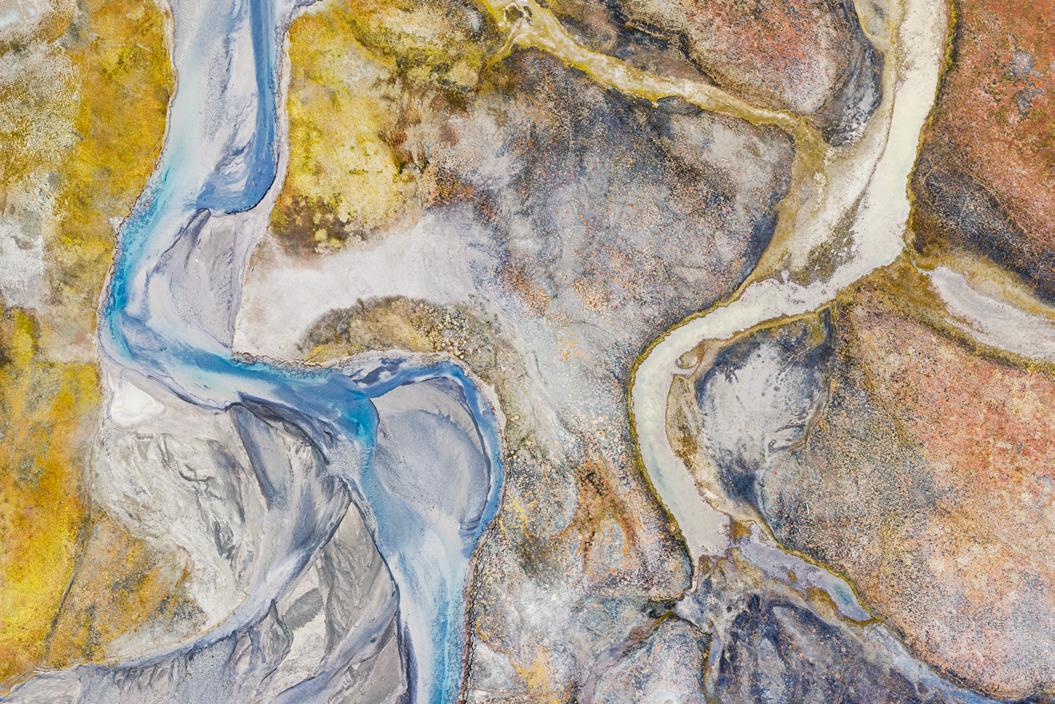
Martin Gregus has numerous projects and expeditions in the works, both in Canada and internationally. In 2021, he won the Rising Star Portfolio Award in the National History Museum’s prestigious Wildlife Photographer of the Year (WPY) competition and his documentary film on his time with the animals, 33 Days Among Bears.
Polar Bears Wilma, Bamm Bamm, and Pebbles sleep amongst the fireweed, resting in a bed they made for themselves that morning. From a 2020 expedition which resulted in the series 33 Days among the Bears.
Martin Gregus Flower Bears
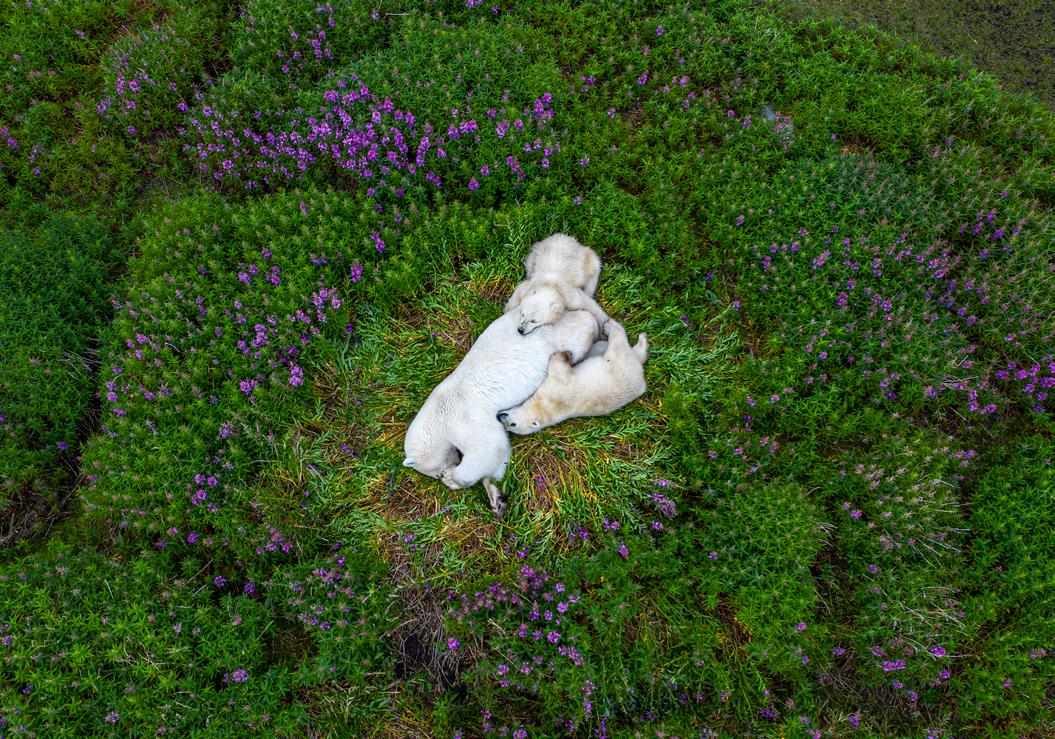
Cristina “Mitty” Mittermeier, a visionary photographer, marine biologist, and avid conservationist, stands as a formidable force in the realm of environmental advocacy. She, alongside her partner Paul Nicklen, co-founded SeaLegacy, a non-profit organization dedicated to creating a healthy and abundant ocean through powerful storytelling and impactful visual media.
A swirl of majestic King Fish, known as Kahu in Aotearoa forms beneath the fins of the photographer as she ascends slowly from a dive in the Port Knights Islands. Each fish measures over two feet in length.
Cristina Mittermeier Swirl of Majestic King Fish
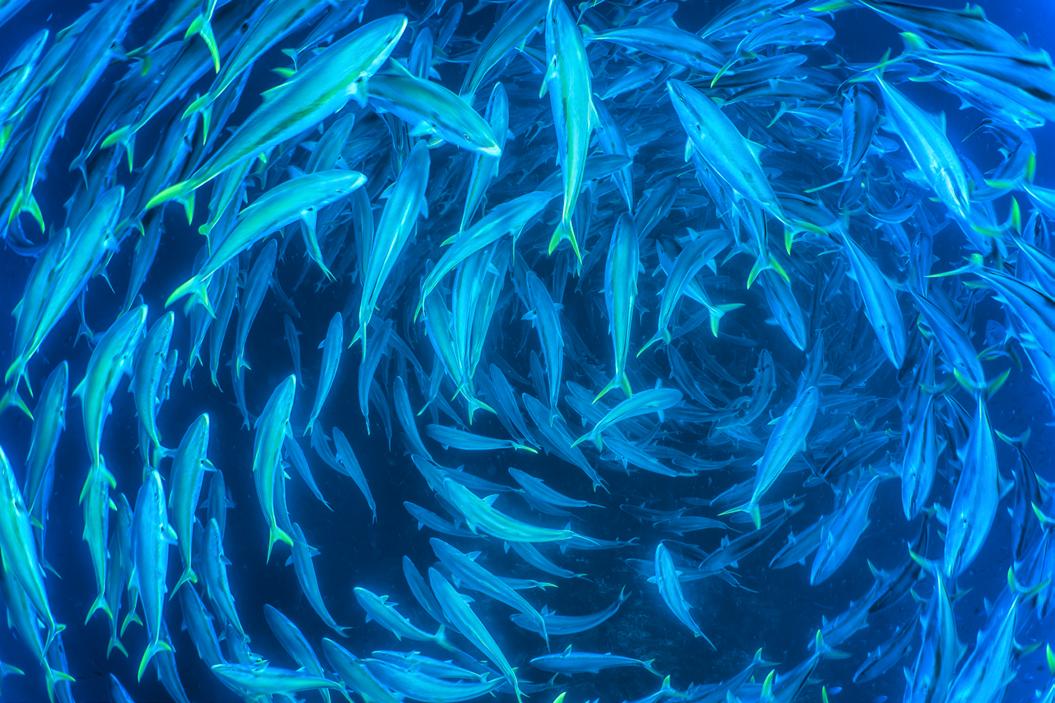
Jim Naughten is an artist exploring historical and natural history subject matter using photography, stereoscopy and painting. Collections holding his work include, The Museum of Photographic Art, San Diego, The Imperial War Museum (UK) The Museum of Art, Houston, Museum of Honolulu and private collections in the US, UK, Europe and South America.
From the series Eremozoic.
Biologist E.O. Wilson has suggested that we are now entering the Earth’s Eremozoic period, which he characterises as an age of loneliness following mass extinctions caused by human activity. In contrast with the more commonly used term Anthropocene (or ‘age of man’), Wilson’s classification addresses the history we are living through from a broader ecological perspective, to recognise humanity’s essential and inextricable connectedness with other forms of life on the planet.
In these pictures, Naughten explores the history of this complex relationship, examining how we have attempted to contain nature in both physical structures and cognitive frameworks. Our image of nature is so often partial, refusing to engage with the environment’s overwhelming power and intricacy whilst erasing traces of human culpability from the narrative of our dwindling natural habitat.
To reflect on how this understanding has evolved, Naughten turned to dioramas –displays designed to provide a discrete window onto nature, often used traditionally in exhibitions of natural history.
He uses photography to reanimate their scenes, presented for fresh consideration in a series of defamiliarised pictures. Taking the artful composition of the original dioramas and heightening their colour palette to further exoticise the settings, Naughten has charged these photographs with a sense of illusion. They play to the popular misperception of nature as something that occurs in faraway ‘wild’ places, cut off from our own reality. The camera’s capacity to compress perspective and scale into these seamless representations encourages us to question what we are seeing in the diorama vistas, where their truth begins and our responsibilities have ended.
As we come to terms with the implications of what our new age of loneliness might mean, the need to reclaim nature from its confined imaginative space on the outskirts of our day to day existence has never been more urgent. This series extends an invitation to consider what our world might look like from these new horizons of awareness.
Jim Naughten Orangutans

Brooke Holm is a photographer and explorer based in Brooklyn, NY. In her work, she studies the elemental features of the Earth through detailed environmental portraits. By disrupting the scale and perspective at which we have been accustomed to consuming our planet, she examines the false dichotomy between humans and nature and seeks a more accurate representation of co-existence.
In the Namib Sand Sea, the tallest dunes tower into the sky, their colors shifting with the sun. From above, the dunes bear resemblance to the female form, bringing to mind our relationship to the natural environment and its magnetic pull on the human subconscious.
Brooke Holm Sand Sea
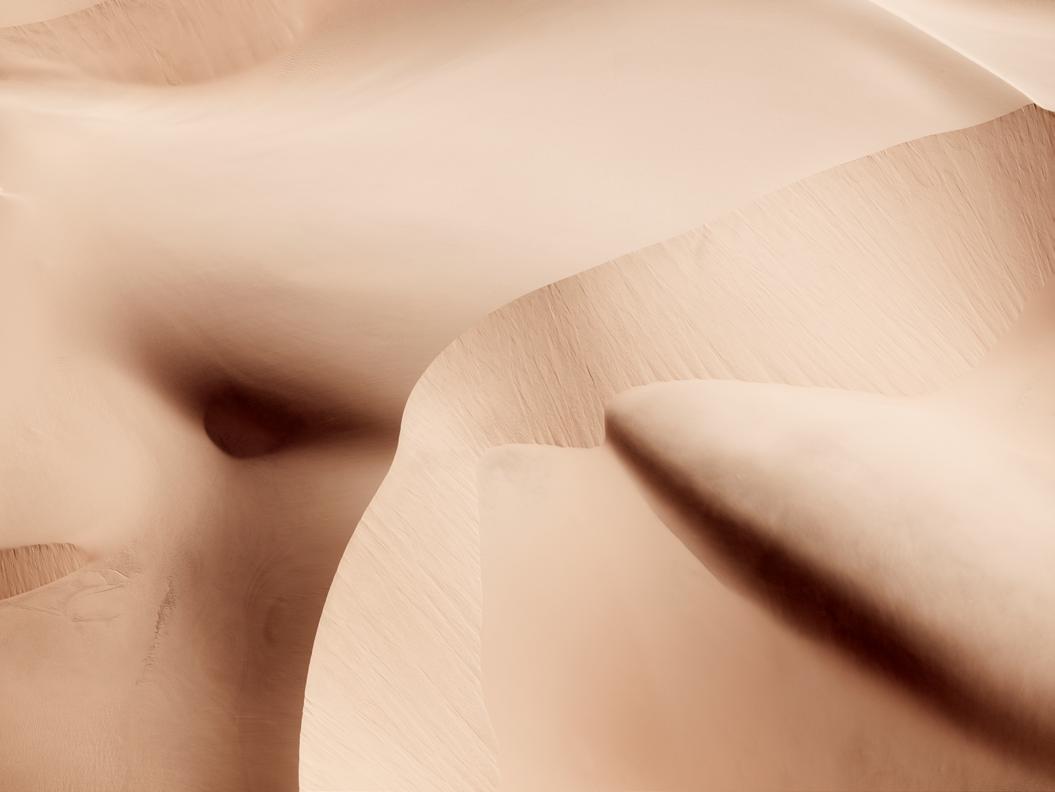
As a conservation and natural history photographer, Jon McCormack hopes that his images convince humans that nature is worth fighting for. He is a member of The Explorer’s Club, a founding board member of Sealegacy, and co-founder of The Kilgoris Project.
In a slice of agate, photographer Jon McCormack found a snow capped peak hidden inside a 1/2 inch square.
Jon McCormack
Tiny Mountain
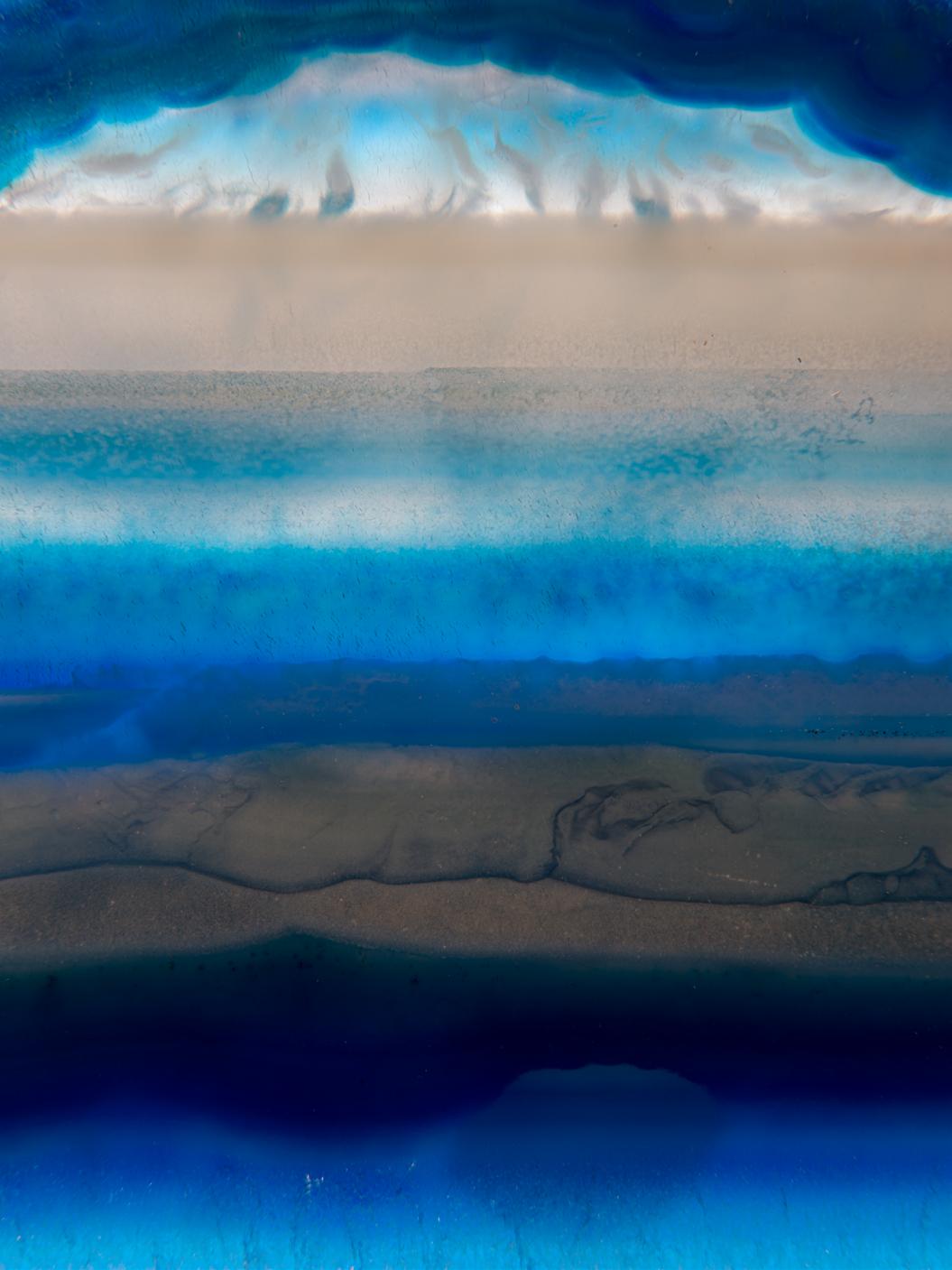
Ami Vitale’s career stands as a testament to her deep dedication to documenting and addressing global crises. As an acclaimed National Geographic photographer, writer, and documentary filmmaker, as well as the founder of Vital Impacts, Ami has consistently spotlighted critical issues affecting our world. Her journey began in conflict zones, where she observed firsthand how environmental degradation—from resource scarcity to climate change—intensifies human suffering and conflict.
A group of Samburu warriors touch a black rhino for the first time in their lives, at the Lewa Wildlife Conservancy, in northern Kenya. This young calf had been orphaned when poachers killed its mother, and was hand-raised at Lewa. Kenya’s black rhinos, once on the brink of extinction, have made a remarkable recovery over the past three decades in Kenya. From a population of 240 in 1984, numbers have soared to over 1,000 thanks to the collaborative efforts of communities, government agencies, and conservation organizations.
Ami Vitale Community

For more than 30 years, Vincent J. Musi has photographed diverse subjects—from traveling Route 66 to global warming, life under volcanoes, Sicilian mummies, the American landscape, culture, history and archaeology.
Azy, a captive born orangutan, is famous for his cognitive skills. Orangutans are critically endangered because of poaching and habitat destruction.
Vincent Musi
Azy

Arnfinn Johansen is a wildlife photographer based in Norway. He is a member of the Norwegian Nature Photographers Association and the founder of Oltepesi Tented Safari Camp / oltepesi com – a specialised camp for wildlife photographers in the Maasai Mara Kenya.
An Arctic Tern flies in front of the Monaco glacier in Liefdefjorden, at the northwest tip of Svalbard in the high Arctic. Every year, the beautiful and tiny 113-gram Arctic Tern makes the longest migration of any animal in the world, traveling between breeding sites in the northern Arctic and survival/moult areas in the Antarctic pack‐ice zone. That practically means flying from the North Pole to the South Pole and back – each year! Miniature transmitters have revealed that they follow zigzagging routes and rack up to 71,000 kilometres annually!
Arnfinn Johansen
Arctic Tern
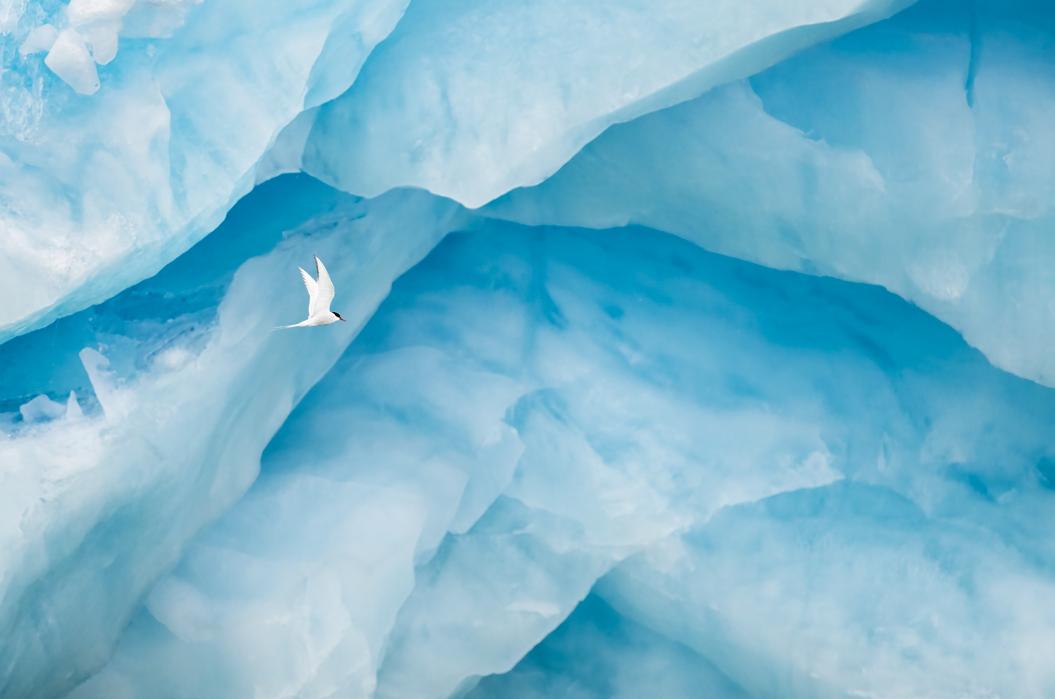
Frans Lanting has documented wildlife and wild places from Africa to Antarctica for more than three decades, creating a unique body of work that conveys a passion for nature, a sense of wonder about the earth, and concern for our living planet. His influential work appears in publications, exhibitions, and fine art collections around the world.
A set of blooming orange and red wildflower Orchids.
Frans Lanting Orchid, California

Jassen Todorov is the Grand Prize Winner of the 2018 National Geographic Photo Contest. His images have been published and featured by National Geographic, the Guardian, Telegraph, Times, Daily Mail, Metro, Daily Mirror and Digital Photographer (UK) and many more
The Grand Prismatic Spring in Yellowstone National Park, Wyoming is not only the largest hot spring in the United States but one of the most magnetic places to view from above. This image was taken at sunrise while flying my single-engine 1976 Piper Warrior plane.
Jassen Todorov Yosemite
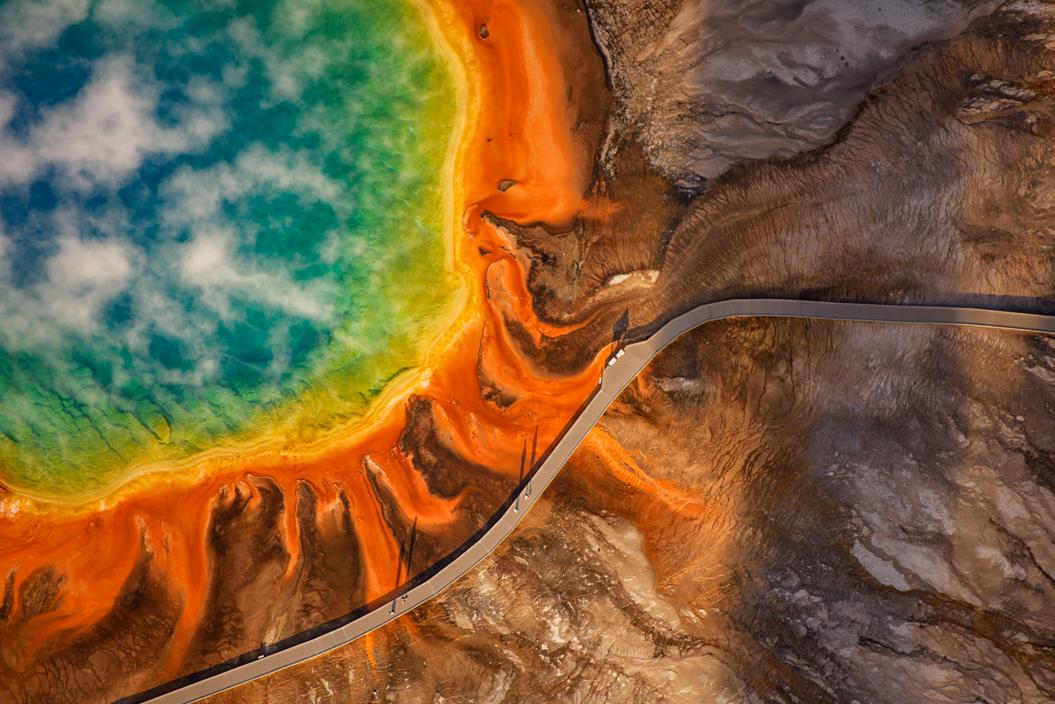
Nichole Sobecki is a photographer and filmmaker based in Nairobi, Kenya. She aims to create photographs and films that demand consideration for the lives of those represented – their joys, challenges, and ultimately their humanity. Amidst our fractured present existence, she believes that a well-told story can cut through the noise, deepen empathy, and inspire a more conscious world.
A “haboob,” or sandstorm, rolls across the Meroë pyramids in Sudan. Most of the 41 tombs here belong to the royals of the powerful Kingdom of Kush (900 B.C. to A.D. 400), which ruled large parts of the middle Nile Valley.
Nichole Sobecki Meroë Pyramids
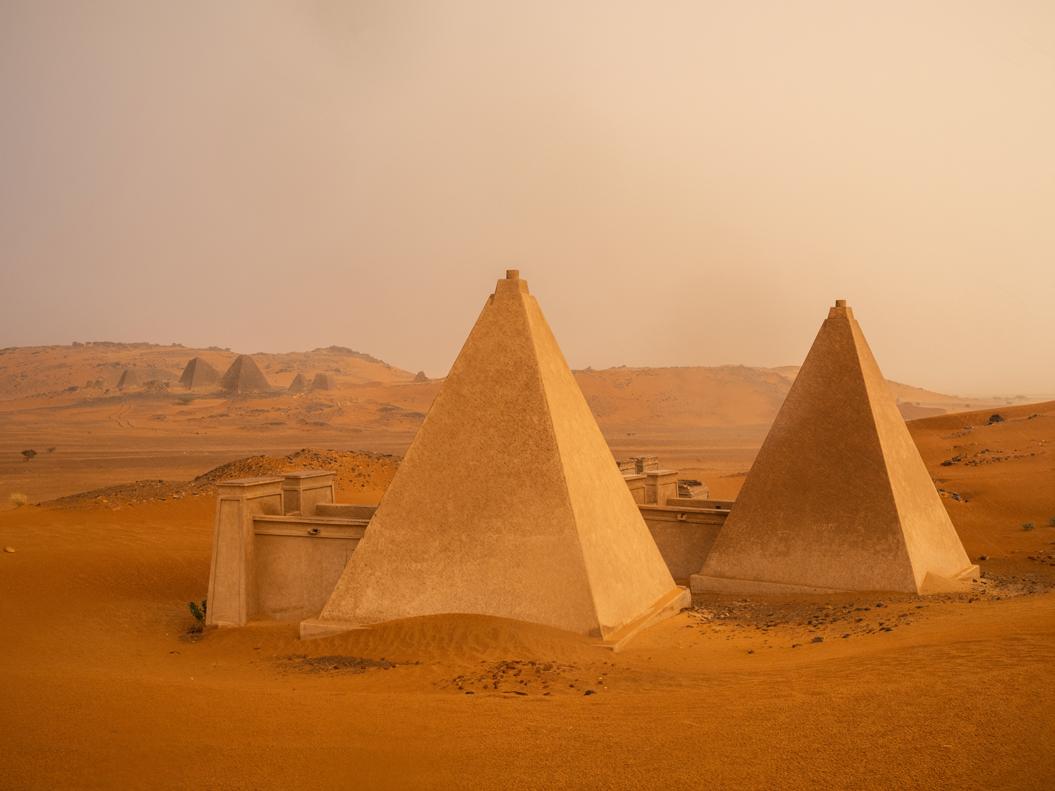
Javier Aznar is a Spanish professional photographer who is focused on natural history and wildlife conservation, and its relationship with humans. With a biology career as a background, his photographs aim to offer a personal point of view of nature at its wildest and most fascinating state.
Two little owls (Athene noctua) perch on top of a rock at sunrise in Spain. With an appearance similar to a cat’s, including big yellow eyes and strong claws, these tiny birds hunt primarily insects and other small animals at sunrise and dusk, when they are more active, especially during the hottest months of the year. These sedentary birds inhabit northern Africa and parts of Europe and Asia.
Javier Aznar
Two Owls

In 2012 Xavi Bou embarked on Ornitographies; photography inspired by his curiosity about the invisible patterns traced by birds in flight.
Common Starlings, Ebro Delta, Catalonia.
Ornithographies arises from the concern for capturing those unnoticed moments and from the interest in questioning the limits of human perception. This project focuses on birds, in order to capture in a single time frame, the shapes they generate when flying, making visible the invisible.
Ornitographies is a balance between art and science; a nature-based dissemination project and a visual poetry exercise but above all, an invitation to perceive the world with the same curious and innocent look of the child we once were.
#128
Xavi Bou
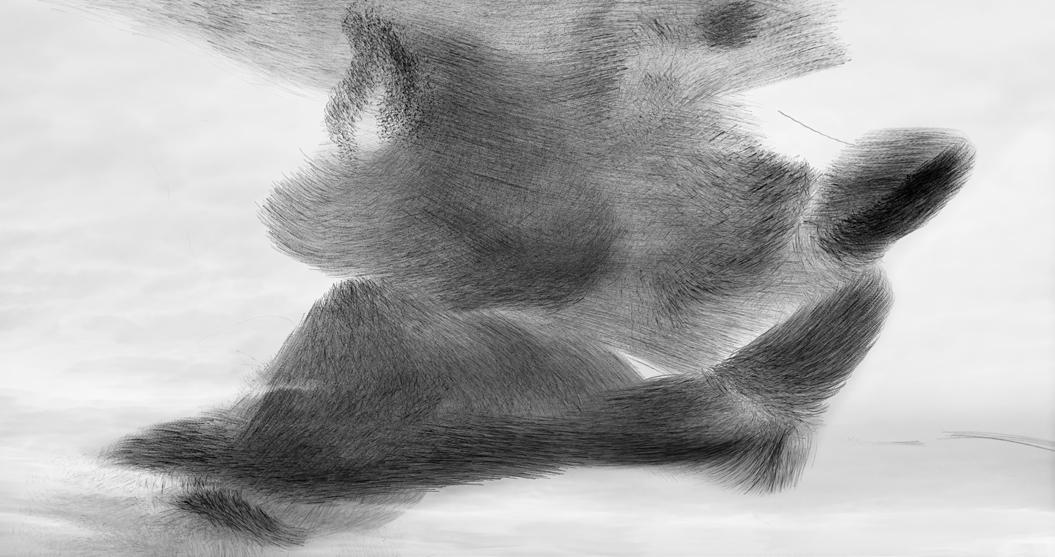
Babak Tafreshi is a photojournalist, explorer, and speaker that uses the context of night sky photography to bridge Earth and sky, art and science, and cultures and time. A National Geographic photographer and cinematographer, he lives in Boston with his wife and child.
This moonlit 2011 night of Iran’s Alborz Mountains was the longest night of the year (Dec 20-21), the time for a 3000-year old winter solstice celebration known as Yalda, still widely popular in the Persian culture. Also known as Shab-e Cheleh it brings families together to celebrate the rebirth of the sun after the longest night, the triumph of light over darkness. Some of the Christmas elements share common origin with Yalda in the Zoroastrian culture and Mithraic tradition of worshipping the sun.
The time-exposure image shows a car passing on a mountain road and the Earth rotation during one hour, turning the sky with stars circling around the north celestial pole, marked by the north star Polaris. In the foreground is Mt Damavand, a spectacular volcano reaching 5610 meters high (18,400 ft). It’s the Asia’s highest volcano, just 70km away from Tehran. The natural symbol of Iran, from ancient mythology to the modern world, it last erupted more than 7,000 years ago, but it’s still a potentially live volcano.
Babak Tafreshi Star Trails
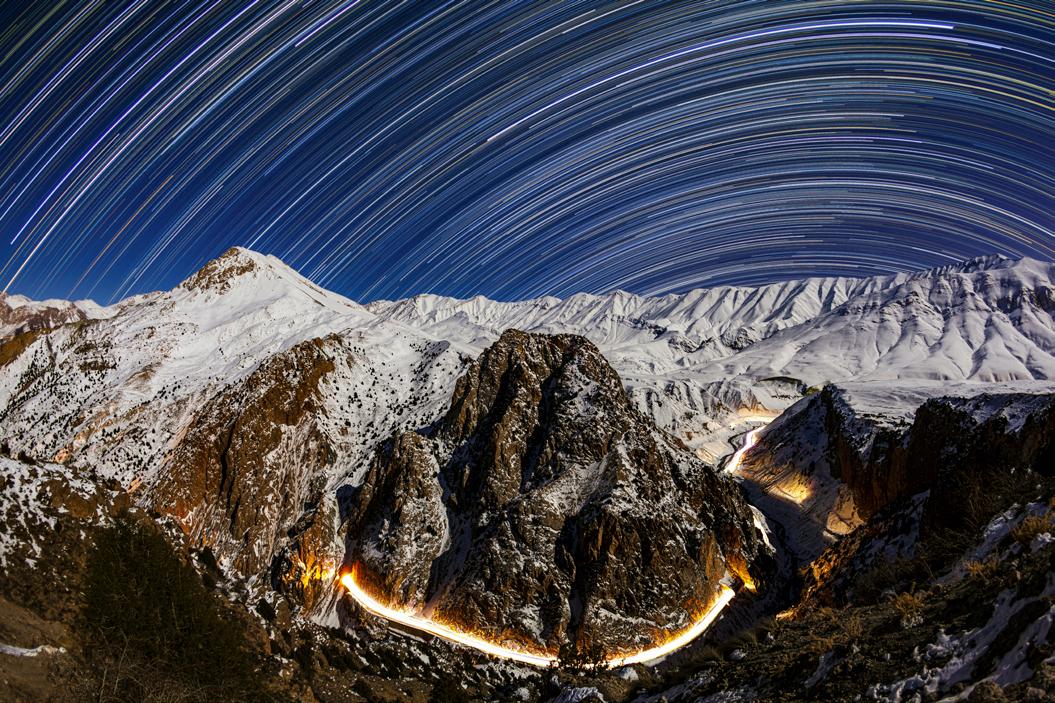
Yva Momatiuk and John Eastcott, a wife and husband team, are internationally published photographers of nature. They practice long commitments to places they love and spend most of the year following animals, ever-changing landscapes, and moving with the light and the seasons while exploring the rhythm and wild essence of remote places.
Lenticular clouds at sunset in spring, Patagonia, Argentina.
The sky is a wilderness, a celestial refuge. The clouds we observe are volatile and ever changing visible to us but out of reach. We cannot harness, own or develop them. They retain the clarity of their structure of fine water droplets and crystalline ice particles suspended in the atmosphere at altitudes reaching up to several miles. They create entire skyscapes, half of the landscape we see and challenge us to look up and watch them unfold.
Momatiuk Eastcott Lenticular Clouds
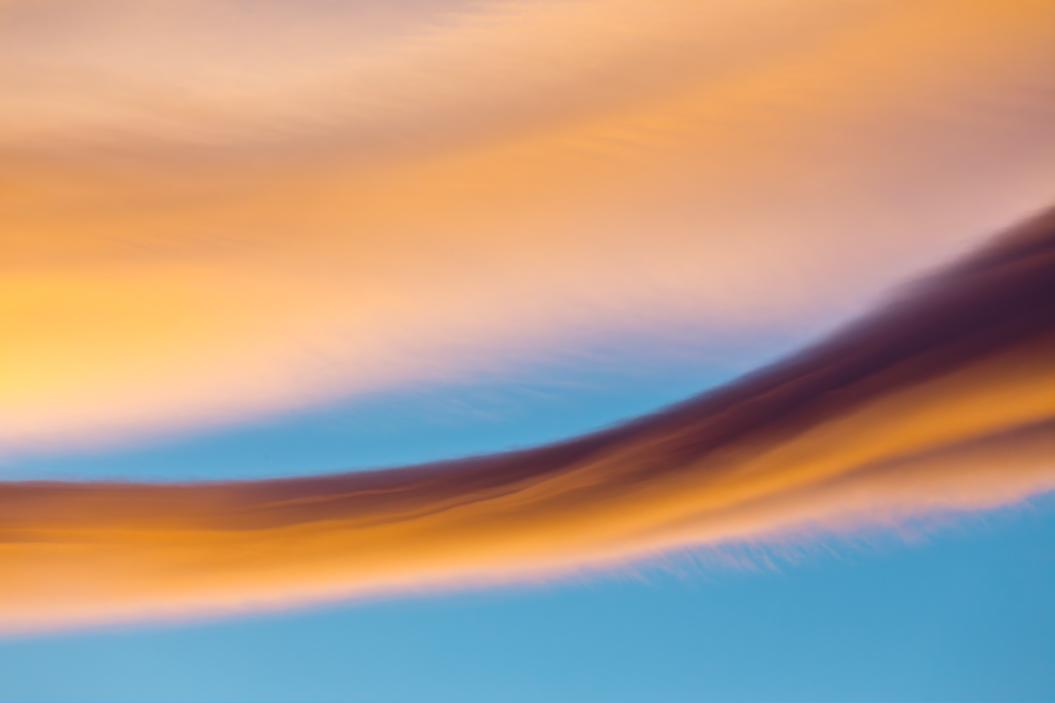
An award-winning photographer, Jody MacDonald is no stranger to adventure and exploration in the last untamed corners of the planet.
This is Rajan, a 66-year-old Asian elephant and the last of his kind. Brought to the Andaman Islands for logging in the 1950s, he and a small group of 10 elephants were brutally forced to learn how to swim in the ocean to bring the logged trees to nearby boats and then eventually swim on to the next island. When logging became banned in 2002, Rajan was out of a job. He lived out his days in harmony among the giant trees he used to haul in India’s Andaman Archipelago. Rajan was the last of this group to survive until his death in 2016.
Jody MacDonald Rajan Morning Walk
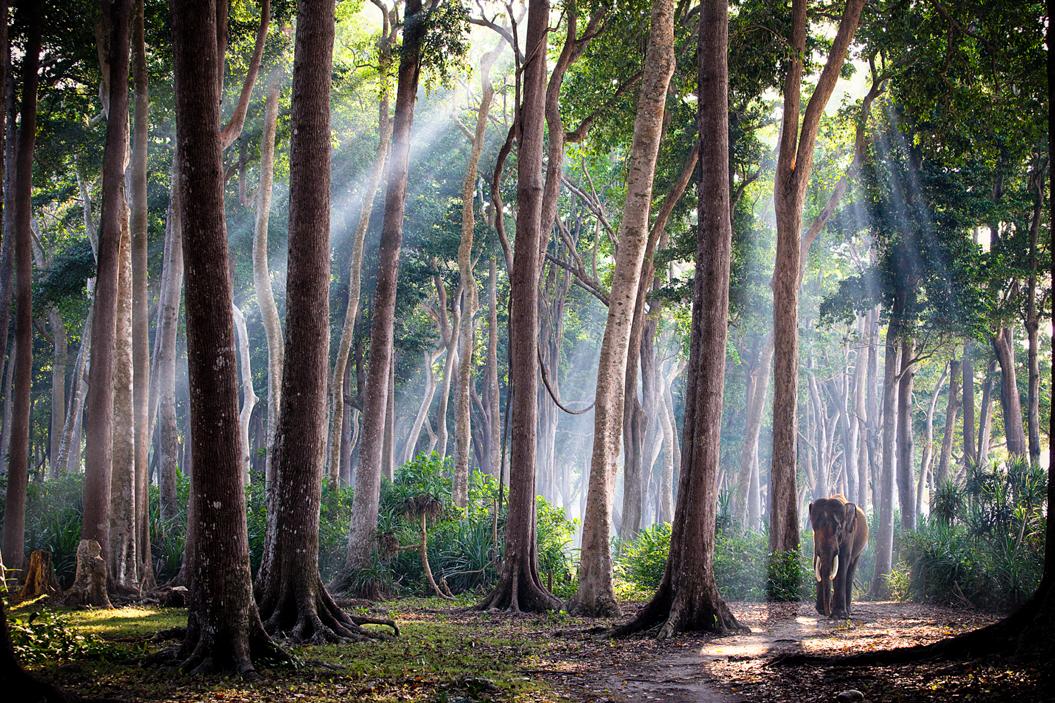
Jose Manuel has been a wildlife photographer for 25 years and specialises in birds. He’s also worked on several studies on the migration of birds, which have been published in magazines such as Aedeola (Seo/Birdlife).
On this morning, the stoat performed a series of jumps on the snow for a few minutes that it had not done the previous days. He seemed to be playing with the freshly fallen snow, making sudden jumps and crawling through the snow.
Scientists have witnessed stoats (Mustela erminea) engaging in similar displays on many occasions, and they refer to the behavior as dancing, although their opinions are divided about what motivates the leaps and twists. Sometimes, the dances are performed in front of a rabbit or large bird in a seeming attempt to confuse or distract potential prey—a strategy that has proven effective in a number of documented interactions. At other times, as was the case in the display photographed, there is no prey animal in sight, and the dance seems simply to be an expression of exuberance. A third hypothesis is that the dances are actually an involuntary response to a parasitic infection, since stoats are known to be hosts for cranial parasitic worms.
Jose Manuel Grandio
The Stoat’s Game

Xavi Bou became interested in natural sciences at a young age, during walks with his grandfather in the wetlands of the Llobregat Delta. In 2012 he embarked on Ornitographies; photography inspired by his curiosity about the invisible patterns traced by birds in flight.
Sturnus vulgaris, Common starling, Ebre Delta, 2023
Ornithographies arises from the concern for capturing those unnoticed moments and from the interest in questioning the limits of human perception. This project focuses on birds, in order to capture in a single time frame, the shapes they generate when flying, making visible the invisible.
Ornitographies is a balance between art and science; a nature-based dissemination project and a visual poetry exercise but above all, an invitation to perceive the world with the same curious and innocent look of the child we once were.
Xavi Bou
Ornithography #283
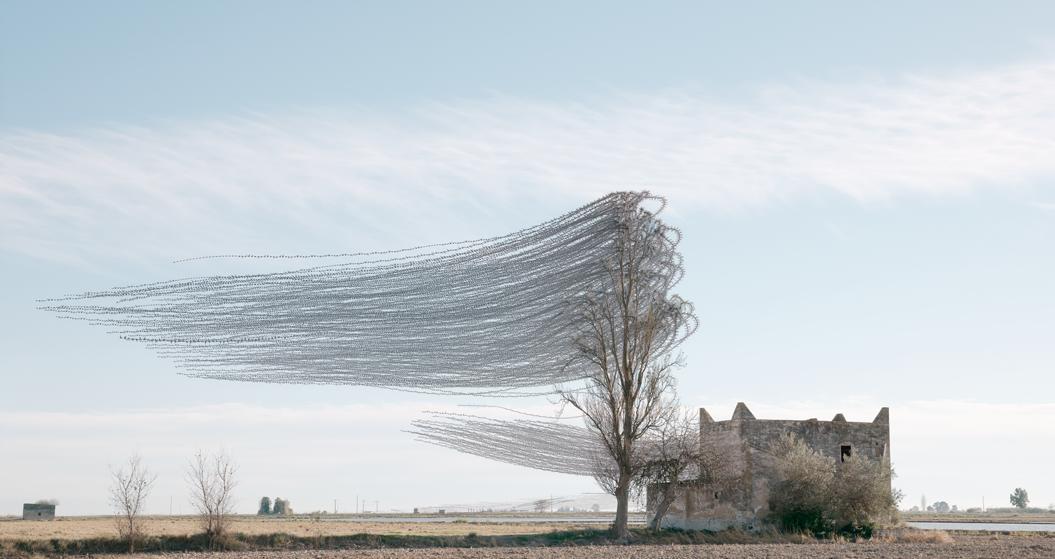
Tim Flach is known for his captivating and thought-provoking images of the animal kingdom. He captures both the power and vulnerability of animals, highlighting their undeniable connection with humans and transporting audiences to a new visual perspective on wildlife and conservation.
Flach has five main bodies of work which have been exhibited worldwide, including Museums of Natural History, from Paris to Beijing. He has seven international award-winning books, translated into multiple languages, including Equus (2008), DogsGods (2010), More Than Human (2012), Evolution (2013), Endangered (2017), Who am I? (2019) and Birds (2021).
Scientific name: Family Lampyridae Range: Circumglobal, tropical/temperate latitudes IUCN Red List status: Not Evaluated
This work is from Flach’s series Endangered, which highlights the harsh realities species face on the edge of extinction
Tim Flach Fireflies
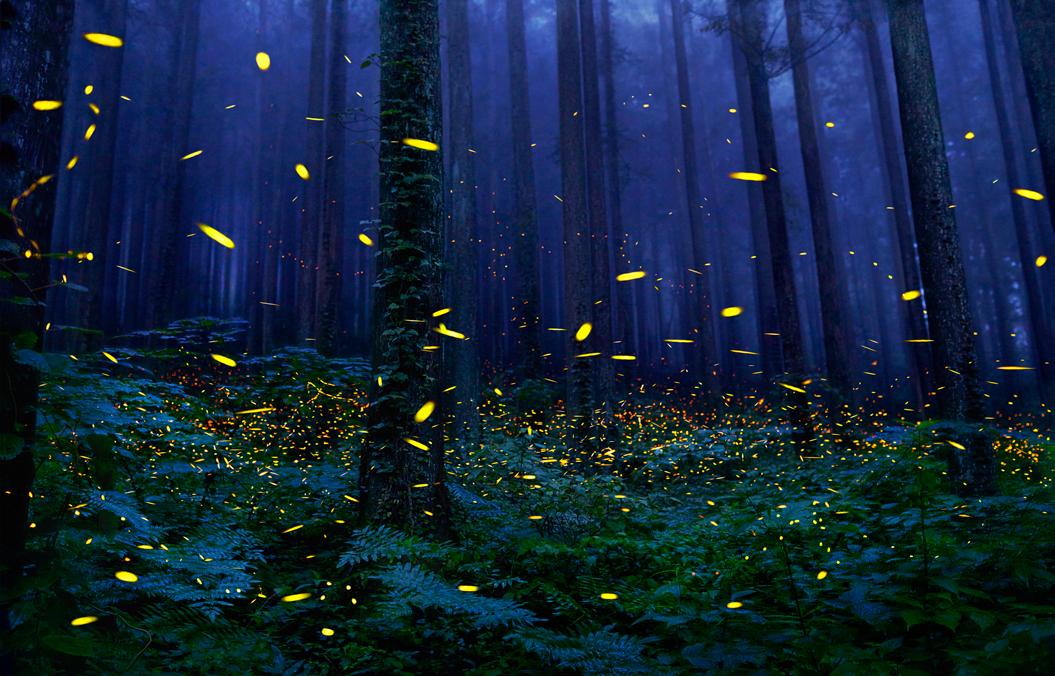
Isabella Tabacchi is an Italian landscape photographer capturing emotional, and dreamlike views of natural landscapes across the globe. She loves to evoke profound emotions and meaning through the elements of nature in her photography.
Taken in the highlands of Iceland, “Tree of Life,” showcases a network of river deltas and streams spread out like tree branches, framed against a strikingly dark and textured landscape. The branching streams are a vibrant yellow-green, contrasting sharply with the dark grayish-brown surroundings, giving the appearance of a tree’s canopy.
At the base, a light blue river meanders through the scene, resembling the “roots” of this metaphorical tree. This river appears to have carved through the earth, leaving behind smooth, curved lines and creating a natural composition reminiscent of veins or neural pathways, lending a sense of organic symmetry to the image. The water’s path, coupled with sediment and plant growth, enhances the visual impact, blending the colors and textures beautifully. The entire scene is a demonstration of nature’s artistry, where geological and biological elements converge to form a visual masterpiece that speaks to the beauty and complexity of our planet’s landscapes.
Isabella Tabacchi Tree of Life

Aletheia Casey is an Australian photographic artist based in London. Her work is concerned with environmental issues and post-colonial legacy, alongside personal themes around family and the notion of home.
The stories of “the killing times” are the ones we have heard in secret, or told in hushed tones. They are not the stories that appear in our history books yet they refuse to go away. The Dark Forgetting uses distorted and disfigured landscapes to depict the violence of Australia’s early frontiers. Photographed in the sites of conflicts and massacres which occurred in the Bathurst War, this series reflects upon Australia’s untold history, and the immeasurable toll that this has had on Australia’s national identity, and the Australia’s First Peoples.
Aletheia Casey Dark Forgetting
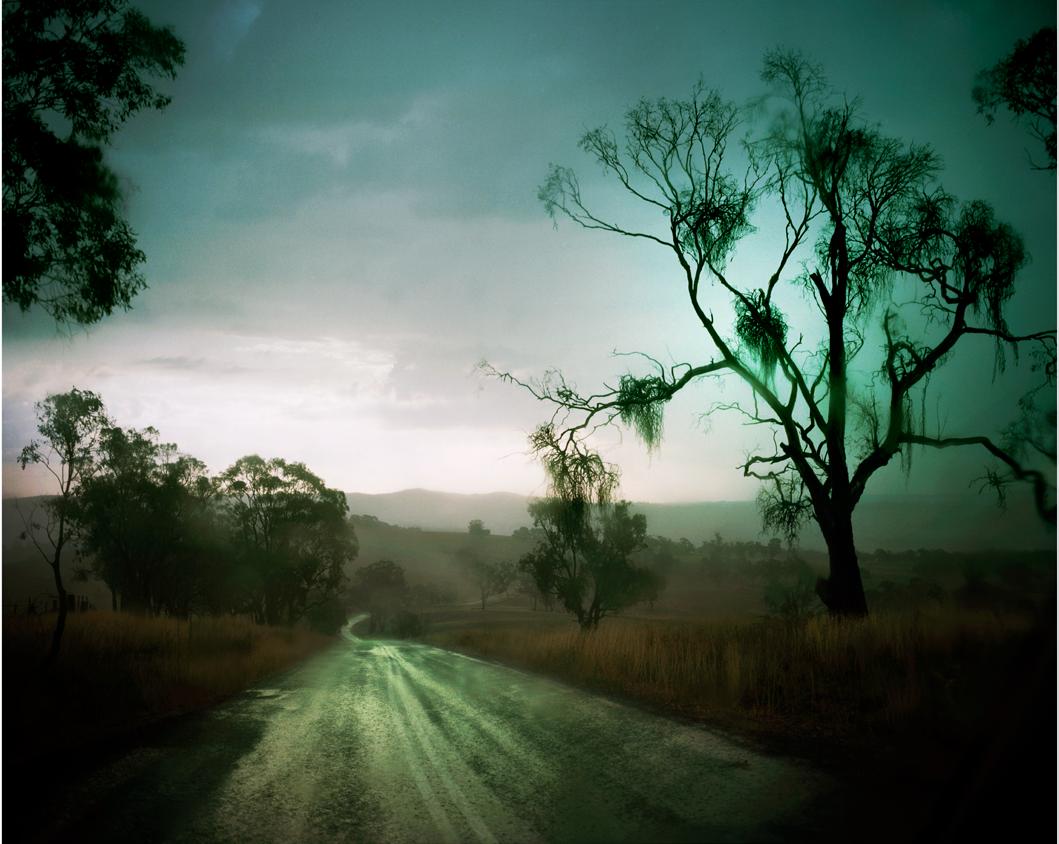
Nick Brandt’s photographs focus on the impact of environmental destruction and climate breakdown, for both some of the most vulnerable people and for the animal and natural world. In 2010, Brandt co-founded Big Life Foundation, a non-profit in Kenya/ Tanzania that employs more than 350 local rangers protecting 1.6 million acres of the Amboseli/ Kilimanjaro ecosystem.
The elephant was killed by poachers in Tsavo in southern Kenya in 2004. His tusks were stored in Kenya Wildlife Service’s ivory strongroom. It is doubtful that there is an elephant left alive today on the African continent with tusks this size. The rangers in this photo work for Big Life Foundation, protecting animals across over 1.6 million acres with more than 350 rangers in 36 permanent and mobile outposts.
Display print only. Information about this work as a limited edition print are available at vitalimpacts.org.
Nick Brandt
Two Rangers Supporting Tusks of Elephant Killed at the Hands of Man

Ami Vitale’s career stands as a testament to her deep dedication to documenting and addressing global crises. As an acclaimed National Geographic photographer, writer, and documentary filmmaker, as well as the founder of Vital Impacts, Ami has consistently spotlighted critical issues affecting our world. Her journey began in conflict zones, where she observed firsthand how environmental degradation—from resource scarcity to climate change—intensifies human suffering and conflict.
Ye Ye, a 16-year-old giant panda, lounges in a wild enclosure at a conservation center in Wolong Nature Reserve. By breeding and releasing pandas, augmenting existing populations, and protecting habitat, China is on its way to successfully saving their most famous ambassador, and in the process, putting the wild back into an icon.
Ami Vitale
Yeye in the Mist

Ami Vitale’s career stands as a testament to her deep dedication to documenting and addressing global crises. As an acclaimed National Geographic photographer, writer, and documentary filmmaker, as well as the founder of Vital Impacts, Ami has consistently spotlighted critical issues affecting our world. Her journey began in conflict zones, where she observed firsthand how environmental degradation—from resource scarcity to climate change—intensifies human suffering and conflict.
An orphaned baby reticulated giraffe named Twiga embraces Sarara Camp wildlife keeper Lekupania. Twiga was rehabilitated, returned to the wild and integrated into a wild herd.
Across Africa, giraffes are undergoing what has been referred to as a silent extinction. Current estimates are that populations have dropped 40 percent in three decades, plummeting from approximately 155,000 in the late 1980s to under 100,000 today, largely from habitat loss and some poaching.
Ami Vitale
Lekupania with Giraffe
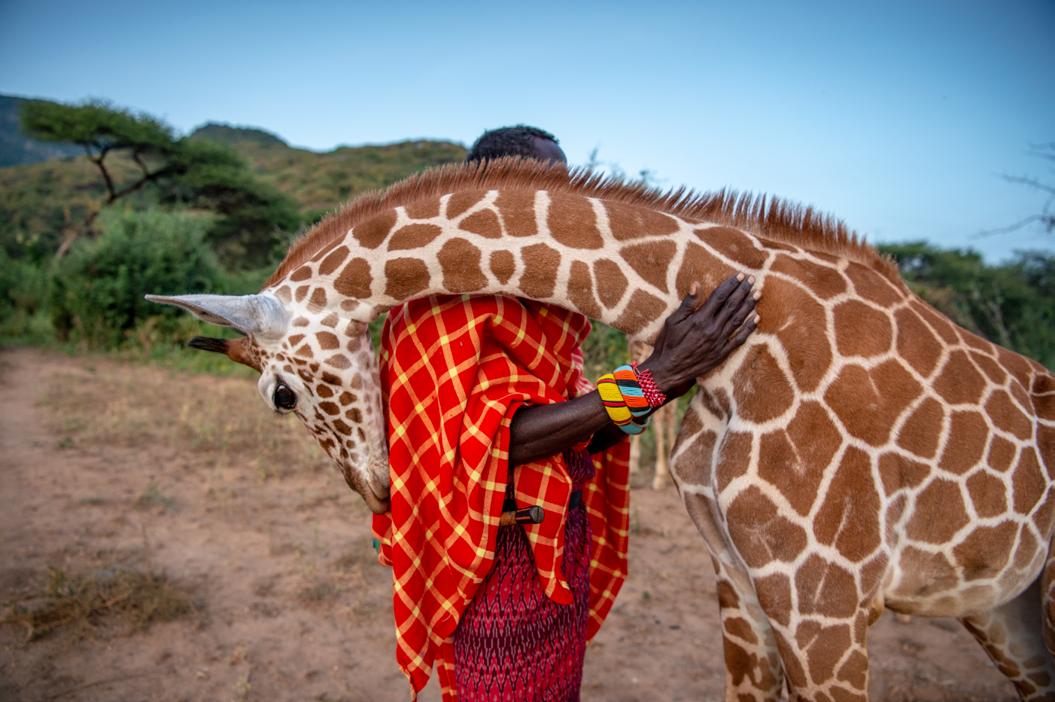
Steve Winter, founder of Founder of Big Cat Voices, has been a photographer for National Geographic for over two decades, specializing in wildlife, and particularly, big cats. He is a Nat Geo Explorer and he’s been named BBC Wildlife Photographer of the Year and BBC Wildlife Photojournalist of the Year.
P-22 was an elusive yet infamous wild cougar who made Los Angeles’s Griffith Park his home for 10 years, nearly his whole life. He passed away on Dec. 17, 2022, as a result of complications from old age and injuries from a car strike. He was 12-years-old, elderly for a mountain lion. He was beloved by millions and his legacy lives on. He has literally changed the landscape for wildlife in Los Angeles and beyond.
His legacy continues, transforming the landscape for wildlife in Los Angeles and beyond. The photo ignited a movement to protect Southern California’s last cougars and wildlife in two protected areas divided by the 101 Freeway, resulting in the world’s largest wildlife overpass.
Steve Winter Hollywood Cougar

Evgenia Arbugaeva was born in the town of Tiksi, located on the shore of the Laptev Sea in the Republic of Yakutia in Siberia. In her personal work she often looks into her homeland - the Arctic, discovering and documenting the remote worlds and people who inhabit them.
Evgenia is a National Geographic Society Storytelling Fellow, and a recipient of the ICP Infinity Award and the Leica Oskar Barnack Award. Her work has been exhibited internationally and appeared in publications such as National Geographic, Time and The New Yorker magazines among others. In 2023 her short documentary film HAULOUT has been nominated for an Academy Award. She lives in London, UK.
Christina is dressed up in a curtain and a crown made of a carton box. She poses as Princess of Tundra in the Nenets reindeer herders’ camp.
Evgenia Arbugaeva
Princess of Tundra
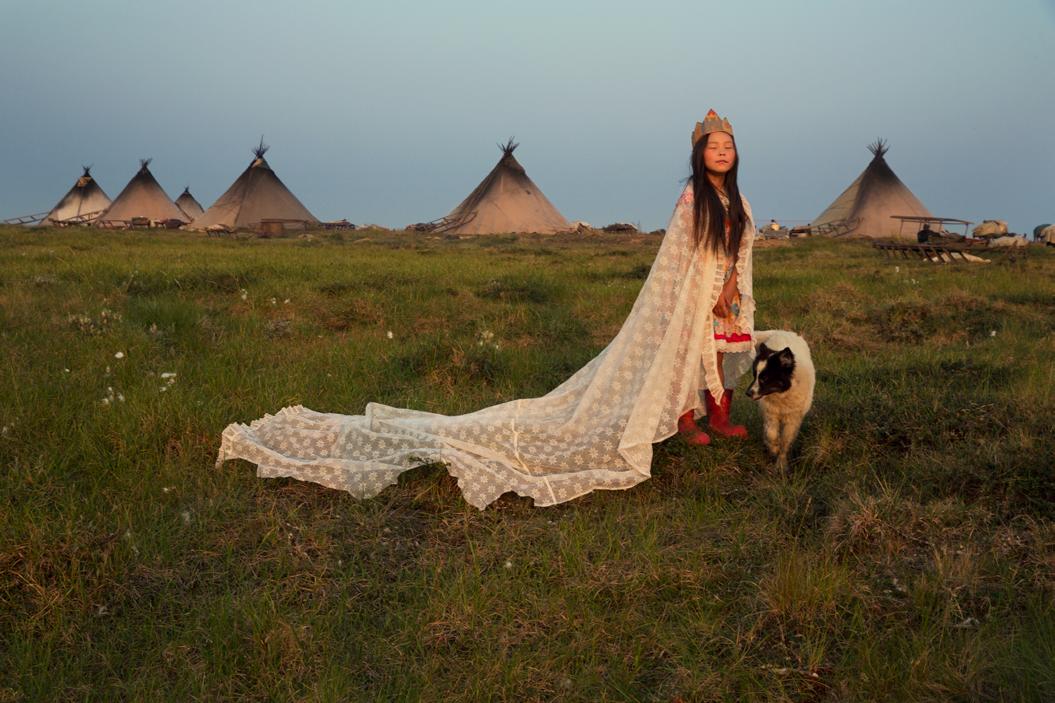
Kristina Makeeva is a photographer, author of the global project “Simple Magic Things”, a seeker of magic in the ordinary.
A blooming dragon tree is seen through the flowers of a bottle tree on the Island of Socotra. One of the most famous endemic plants of Socotra, the Dracaena cinnabari looks like a mushroom and grows up to 10 meters high with a green cap. From the bark of this tree, when cut, red sap begins to flow, which quickly solidifies; Since ancient times, local residents have used the resulting crimson gum for medical, veterinary and cosmetic purposes.
Kristina Makeeva
Socotra Blooming Dragon Tree and Bottle Tree. Floor 7, Suite
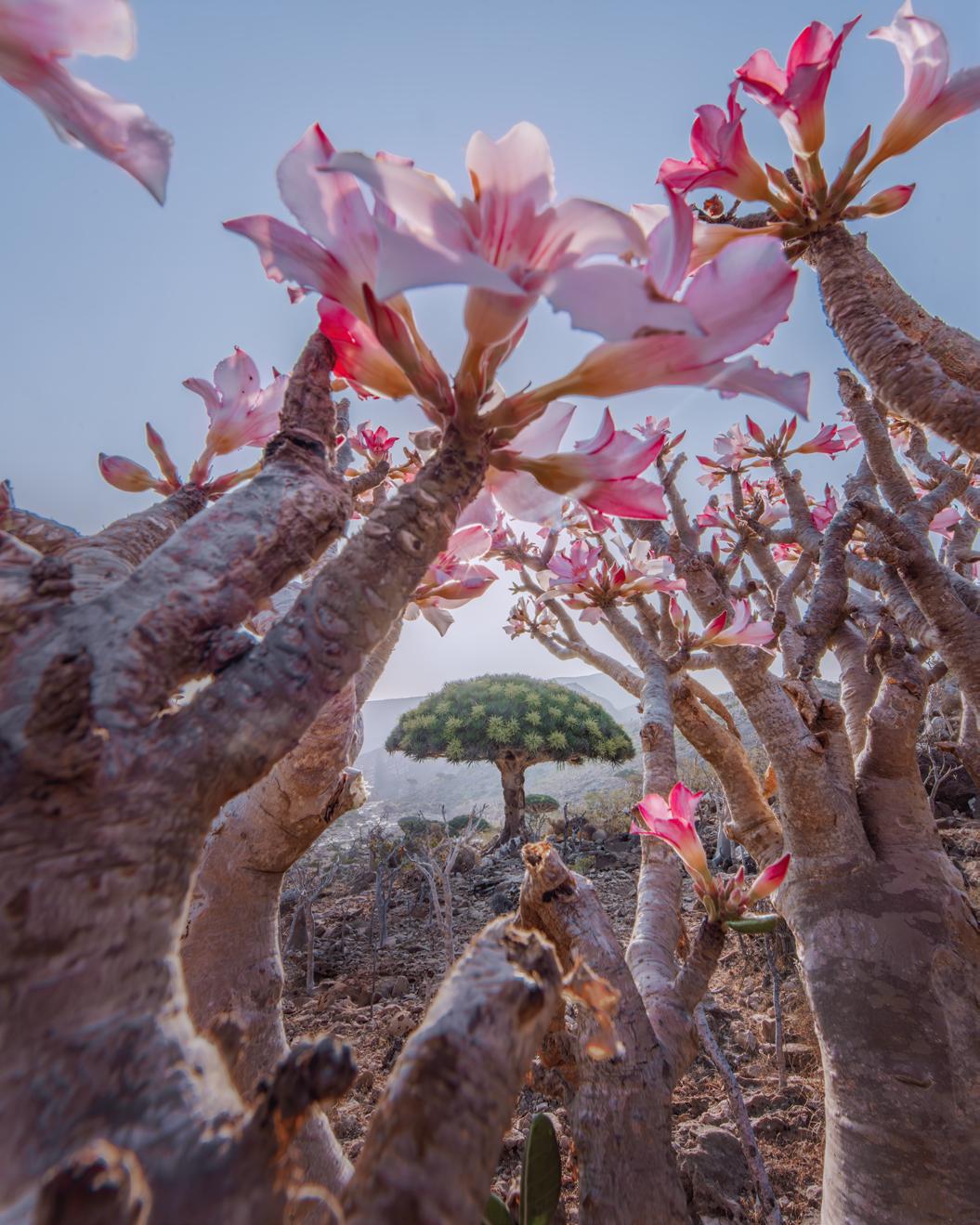
Volume 1
Maison Senato Via Senato 13, 20121 Milano
Diomede Srl, Via San Giuseppe Cottolengo 15 20143 Milano
P.I./C.F. IT10892490961 press@maisonsenato.com
Maison Senato: The Photography Residency
© 2025, Maison Senato
All rights reserved www.maisonsenato.com
© 2025, Vital Impacts
All photo rights reserved www.vitalimpacts.org
Back cover photograph by Tine Poppe
Curated by Alessia Glaviano
Project managed by Amira Del Bono
Graphic design and book design by Alessandro Lanfrancotti
TWK Lausanne designed by Nizar Kazan, published by WELTKERN®
Printed by Faenza Printing Industries Spa First edition, February 2025


